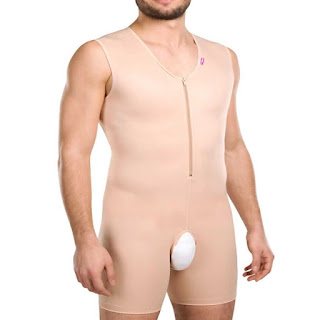Choosing The Right Level Of Medical Grade Compression Stockings
Medical grade compression stockings and socks can provide relief for a number of conditions, including achy legs, circulation problems, and varicose veins. However, if you've never bought compression stockings before, you may be unaware that there are multiple levels of compression, and each level is supposed to aid with a different ailment.
If you have a doctor's prescription for compression socks or stockings, the prescription should indicate the level of compression you require. If you're simply seeking compression clothing to relieve general achiness, keep reading to know how to select the appropriate level of compression. There are compression stockings for women, or compression stockings for men, or hospital compression stockings in Oman available at SehaaonlineOman.
Compression garments have a compression level measured in millimetres of mercury, or mmHg- Know that the greater the number, the higher the compression level.
Between 8 and 15 mmHg is the lowest level of compression. If you're merely looking for something to help with tired, achy legs, this is a good level of compression. They help to gently increase circulation in your legs, which helps to reduce mild swelling and revitalise the area. They're also widely worn by diabetics, who may have impaired blood flow in their limbs.
15-20 mmHg
This light compression is beneficial for minor to moderate edema and achiness, and it can also help avoid varicose veins (particularly during pregnancy). They're also good to wear while travelling to help prevent deep vein thrombosis, or if you spend a lot of time sitting or standing during the day. A doctor may also prescribe them to aid with Ehlers-Danlos syndrome (EDS).
20-30 mmHg
This is the most common compression level prescribed by doctors, and is used to treat numerous illnesses. Varicose veins, deep vein thrombosis, moderate edema, and post-surgery are some of the most prevalent conditions treated with this level of compression. This compression level is also used to treat lymphedema, May-Thurner syndrome, and orthostatic hypotension, as well as following various procedures. These socks may also be labelled as "hard" compression or Class I compression.
30-40 mmHg
This level of compression is also known as Class II compression, and it is frequently suggested for more serious cases of varicose veins, severe edema, and deep vein thrombosis, as well as many of the conditions outlined in the preceding section. They may also be administered post-sclerotherapy to aid in the healing of active venous stasis ulcers. This is a high level of compression, and you should not buy or wear these without a doctor's prescription.
40-50 mmHg
This high level of compression sock, also
known as Class III compression, should only be worn when prescribed by a
doctor. This form of compression garment is typically prescribed to treat
chronic venous insufficiency and post-thrombotic syndrome.





Comments
Post a Comment